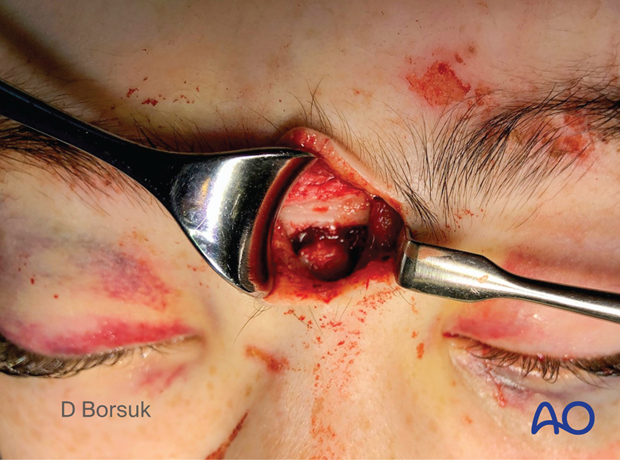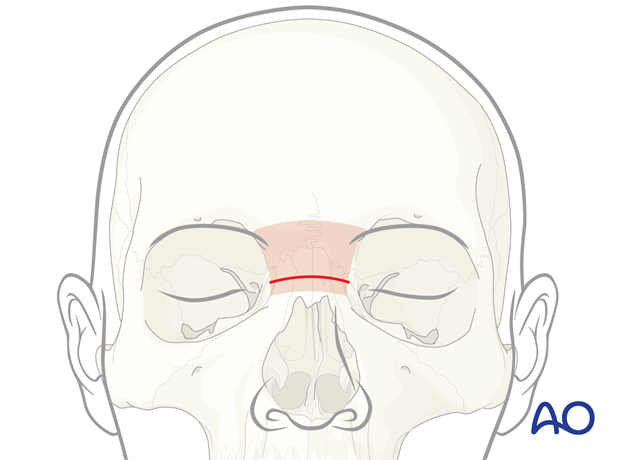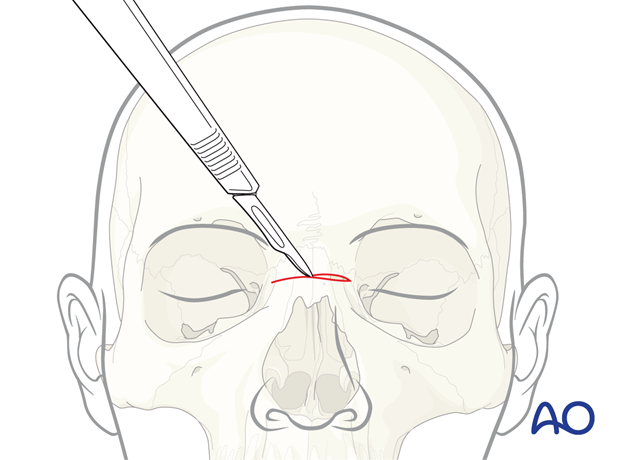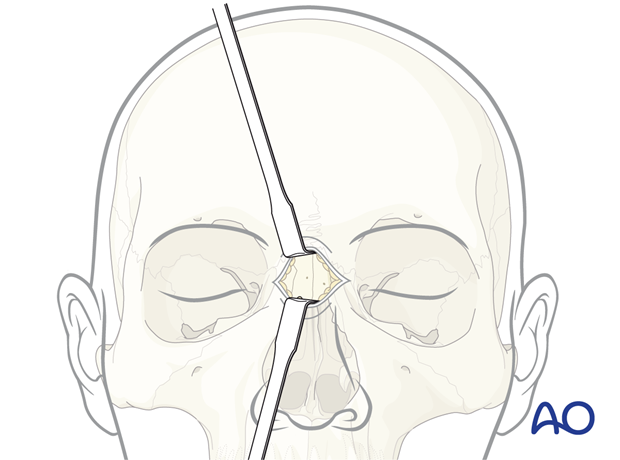Glabellar approach
1. General considerations
The glabellar approach is performed if a convenient preexisting laceration is present. Furthermore, the glabellar approach can be particularly advantageous in elderly patients who have developed horizontal glabellar furrows due to the action of the procerus and corrugator muscles. This approach may also be considered to avoid a coronal incision where only limited exposure is needed in a younger patient with a receding hairline or a bald patient.
An example of where limited exposure of the nasofrontal area may be necessary is a Le Fort II or III fracture.
The most common approach for reducing NOE fractures is a combination of coronal incision, lower eyelid incision, and maxillary vestibular incision. This combined approach is often required to obtain stabilization of the extensive comminuted fractures. Some surgeons use these combined incisions but substitute the coronal incision for the glabellar approach.

2. Skin incision
Locating the skin incision
The incision should be planned in the glabellar furrows or, if appropriate, in the region camouflaged by the bridge of eyeglasses.

Skin incision
Perform a skin incision with a scalpel along the planned incision line. Sharp dissection can then be carried down through the periosteum.

3. Exposure of the bone
A subperiosteal dissection is used to expose the bone. The soft tissue is then retracted to expose the fractures.

4. Wound closure
A simple layered closure is performed, as for any laceration in this area.














